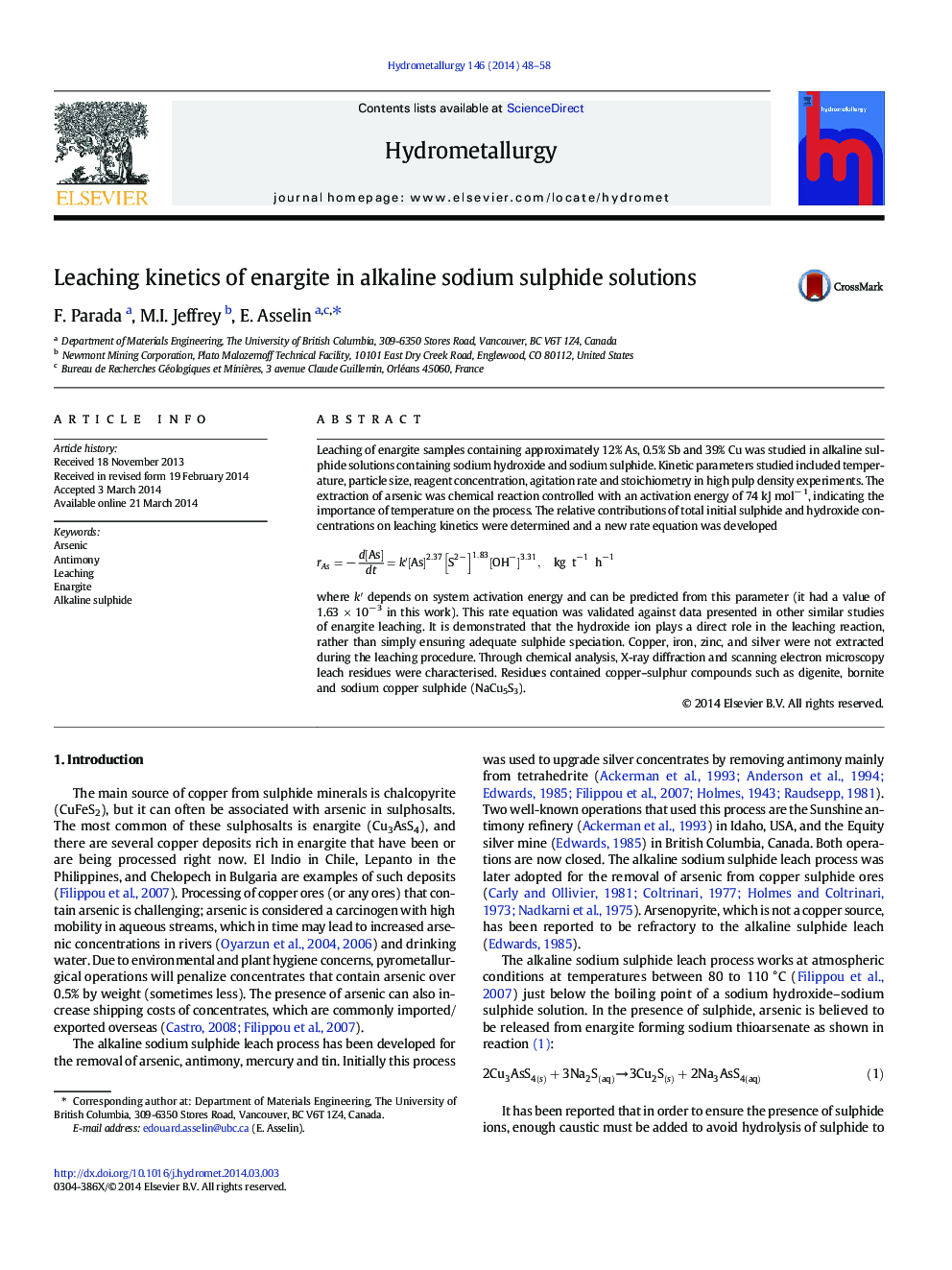| Article ID | Journal | Published Year | Pages | File Type |
|---|---|---|---|---|
| 212128 | Hydrometallurgy | 2014 | 11 Pages |
•A rate expression for the enargite-alkaline sulphide leaching system is proposed•The leaching reaction is chemical reaction controlled•Hydroxide plays a direct role in the leaching reaction•A multistage leaching scenario is examined to increase As and Sb extraction•Residues contain various Cu-S phases and can be poorly crystalline
Leaching of enargite samples containing approximately 12% As, 0.5% Sb and 39% Cu was studied in alkaline sulphide solutions containing sodium hydroxide and sodium sulphide. Kinetic parameters studied included temperature, particle size, reagent concentration, agitation rate and stoichiometry in high pulp density experiments. The extraction of arsenic was chemical reaction controlled with an activation energy of 74 kJ mol− 1, indicating the importance of temperature on the process. The relative contributions of total initial sulphide and hydroxide concentrations on leaching kinetics were determined and a new rate equation was developedrAs=−dAsdt=k'As2.37S2−1.83OH−3.31,kgt−1h−1where k′ depends on system activation energy and can be predicted from this parameter (it had a value of 1.63 × 10− 3 in this work). This rate equation was validated against data presented in other similar studies of enargite leaching. It is demonstrated that the hydroxide ion plays a direct role in the leaching reaction, rather than simply ensuring adequate sulphide speciation. Copper, iron, zinc, and silver were not extracted during the leaching procedure. Through chemical analysis, X-ray diffraction and scanning electron microscopy leach residues were characterised. Residues contained copper–sulphur compounds such as digenite, bornite and sodium copper sulphide (NaCu5S3).
Graphical abstractFigure optionsDownload full-size imageDownload as PowerPoint slide
